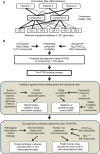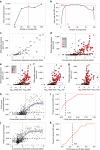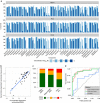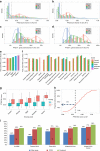A transcriptomics data-driven gene space accurately predicts liver cytopathology and drug-induced liver injury
- PMID: 28671182
- PMCID: PMC5500850
- DOI: 10.1038/ncomms15932
A transcriptomics data-driven gene space accurately predicts liver cytopathology and drug-induced liver injury
Abstract
Predicting unanticipated harmful effects of chemicals and drug molecules is a difficult and costly task. Here we utilize a 'big data compacting and data fusion'-concept to capture diverse adverse outcomes on cellular and organismal levels. The approach generates from transcriptomics data set a 'predictive toxicogenomics space' (PTGS) tool composed of 1,331 genes distributed over 14 overlapping cytotoxicity-related gene space components. Involving ∼2.5 × 108 data points and 1,300 compounds to construct and validate the PTGS, the tool serves to: explain dose-dependent cytotoxicity effects, provide a virtual cytotoxicity probability estimate intrinsic to omics data, predict chemically-induced pathological states in liver resulting from repeated dosing of rats, and furthermore, predict human drug-induced liver injury (DILI) from hepatocyte experiments. Analysing 68 DILI-annotated drugs, the PTGS tool outperforms and complements existing tests, leading to a hereto-unseen level of DILI prediction accuracy.
Conflict of interest statement
J. Parkinen, P. Kohonen, S. Kaski, R.C. Grafström declare ‘personal financial interest’ for being equal contributors to a patent application. All other authors declare no competing financial interests.
Figures





References
-
- Hamburg M. A. Advancing regulatory science. Science 331, 987 (2011). - PubMed
-
- Willyard C. Foretelling toxicity: FDA researchers work to predict risk of liver injury from drugs. Nat. Med. 22, 450–451 (2016). - PubMed
-
- Olson H. et al.. Concordance of the toxicity of pharmaceuticals in humans and in animals. Regul. Toxicol. Pharmacol. 32, 56–67 (2000). - PubMed
-
- Hussaini S. H. & Farrington E. A. Idiosyncratic drug-induced liver injury: an update on the 2007 overview. Expert Opin. Drug Saf. 13, 67–81 (2014). - PubMed
Publication types
MeSH terms
Substances
LinkOut - more resources
Full Text Sources
Other Literature Sources
Medical

